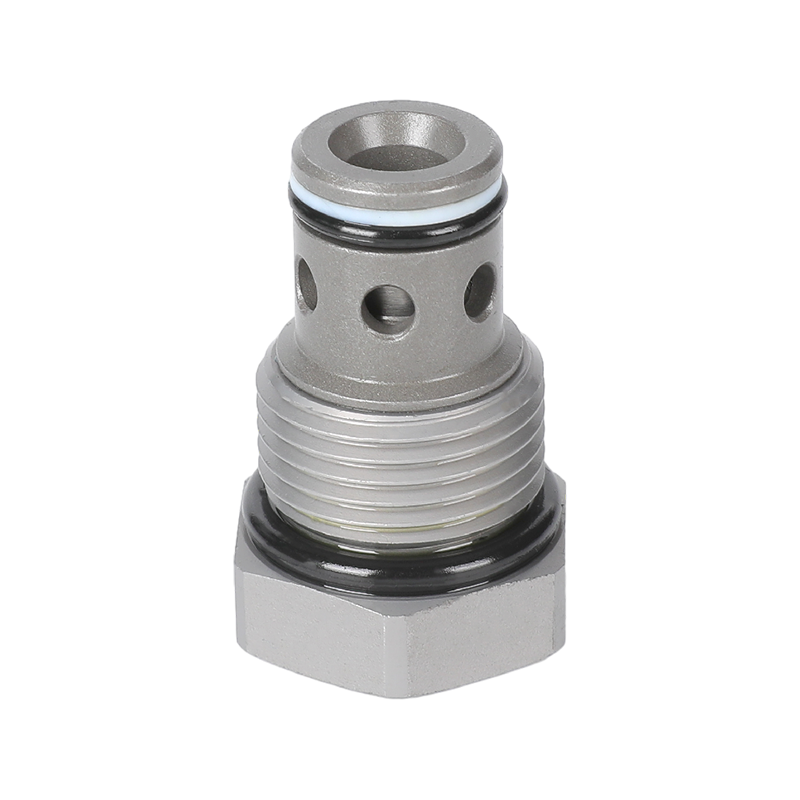SOLENOID VALVE is a commonly used component in industrial automation control and is widely used in automatic control of fluids. According to the working principle and structure, solenoid valves are mainly divided into direct-acting and pilot-operated types.
1. Direct-acting solenoid valve
Structure and principle: The working principle of the direct-acting solenoid valve is relatively simple. The electromagnetic coil of the valve is directly connected to the valve disc. When the current passes through the coil, the magnetic field generated directly acts on the valve disc to open or close it. When the power is not turned on, the valve disc remains closed under the action of the spring; when the current is passed into the coil, the valve disc is attracted to the open position and the fluid can pass through.
Advantages: Fast response: The direct-acting solenoid valve can complete the switch within milliseconds, which is suitable for occasions that require fast response.
Simple structure: Since the design of the direct-acting solenoid valve is relatively simple, it usually has fewer moving parts, so it is easy to maintain.
Low-pressure application: This type of valve is suitable for low-pressure and small-caliber fluid control, and can effectively meet the needs of some small equipment.
Application scenario: Direct-acting solenoid valves are commonly used in the following fields.
Small fluid control systems: such as small equipment such as water dispensers and household appliances.
Laboratory equipment: In the fields of chemical reactions and fluid experiments, high control accuracy and fast response of fluids are required.
2. Pilot solenoid valve
Structure and principle: The structure of the pilot solenoid valve is relatively complex, and its working principle is divided into two stages. First, the electromagnetic coil is energized to generate a magnetic field, which attracts the pilot valve disc to open, and then forms a pressure difference inside the valve body; then, the pressure difference opens the main valve disc to realize the flow of fluid. Unlike the direct-acting type, the pilot solenoid valve relies on the pressure of the fluid to drive the main valve disc.
Advantages: Applicable to high pressure and large flow: The pilot solenoid valve can operate at a higher working pressure and is suitable for large flow fluid control.
Strong durability: Since the main valve disc is driven by fluid pressure, the pilot solenoid valve has relatively less working wear and longer service life.
Energy saving and high efficiency: When powered on, only the pilot valve disc needs to be driven, and less electricity is consumed, so it is more advantageous in occasions where it needs to be opened for a long time.
Application scenarios: Pilot solenoid valves are often used in the following fields.
Large industrial systems: such as fluid control in industries such as petroleum, chemical, and pharmaceuticals, which can cope with complex fluid conditions.
Water supply and drainage systems: used in urban water supply, sewage treatment, and other fields, and can withstand large fluid pressures.
3. Selection and application suggestions
When selecting a solenoid valve, it is crucial to understand the characteristics of direct-acting and pilot-operated types.
Pressure and flow requirements: If the pressure or flow rate of the application environment is high, pilot-operated solenoid valves are preferred; conversely, if the system is small and requires fast response, direct-acting solenoid valves can be selected.
Control accuracy: In situations where high-precision control is required, direct-acting solenoid valves are more suitable due to their fast response characteristics.
Energy efficiency: In applications that are open for a long time, pilot-operated solenoid valves can be more economical due to their energy-saving characteristics.
The direct-acting and pilot-operated structures of solenoid valves each have their own characteristics and applicable scenarios. The direct-acting solenoid valve is suitable for low-pressure and small-flow applications due to its simple structure and fast response characteristics; while the pilot-operated solenoid valve is more suitable for high-pressure and large-flow industrial occasions due to its high pressure resistance and long life. In actual applications, selecting the appropriate type of solenoid valve according to specific needs can improve the efficiency and reliability of the system.

 English
English русский
русский
 ++86-0575-87669088
++86-0575-87669088


